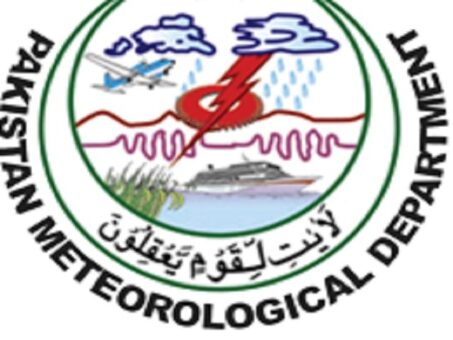As April unfolds, the Pakistan Meteorological Department (PMD) has issued a crucial advisory, predicting various weather phenomena across the country. The advisory highlights the potential for a heatwave in urban areas, increased temperatures leading to avalanches in mountainous regions, and other weather-related impacts.
The PMD anticipates that heightened temperatures may trigger heatwave conditions in plain areas, particularly in Punjab and Interior Sindh. Moreover, urban areas are at risk due to the urban heat island effect, exacerbating the heatwave conditions. In the northern parts of Pakistan, including the mountainous areas of Khyber Pakhtunkhwa, Gilgit Baltistan, and Azad Jammu & Kashmir (AJ&K), increased temperatures may result in avalanches in vulnerable snowbound valleys.
The advisory takes into account the Positive Phase of the El Niño Southern Oscillation (ENSO), transitioning towards a Neutral Phase, and the prevailing Neutral Phase of the Indian Ocean Dipole (IOD). As a result, the overall tendency is towards near-normal rainfall in most parts of Pakistan. However, the northern half of the country, including Khyber Pakhtunkhwa, Northern Punjab, and AJ&K, is expected to receive slightly above-normal rainfall in April 2024.
Furthermore, daytime maximum temperatures are projected to remain normal to slightly above normal, while warmer than normal minimum temperatures are expected nationwide. The maximum positive departure in temperature, both minimum and maximum, is anticipated over northern parts of the country, particularly Northern Khyber Pakhtunkhwa, Gilgit Baltistan, and AJ&K.
The advisory warns of potential impacts resulting from these hydro-meteorological conditions. Temperature gradients across the country could lead to strong winds, dust storms, thunderstorms, and hailstorms. Additionally, the increased temperatures may heighten the risk of glacial lake outburst flood (GLOF) incidents in vulnerable valleys of Northern Khyber Pakhtunkhwa, Gilgit Baltistan, and AJ&K.
Moreover, the heightened rainfall in the northern half of Pakistan could result in flash flooding and landsliding in vulnerable mountainous and hilly areas. The advisory emphasizes the need for regular irrigation for seasonal vegetables and newly sown Kharif crops, while also forecasting the end of the pollen season by mid-April 2024.
With these predictions in mind, authorities and citizens are urged to remain vigilant and take necessary precautions to mitigate the potential impacts of these weather phenomena. By staying informed and prepared, communities can better cope with the challenges posed by April’s weather dynamics across Pakistan.
